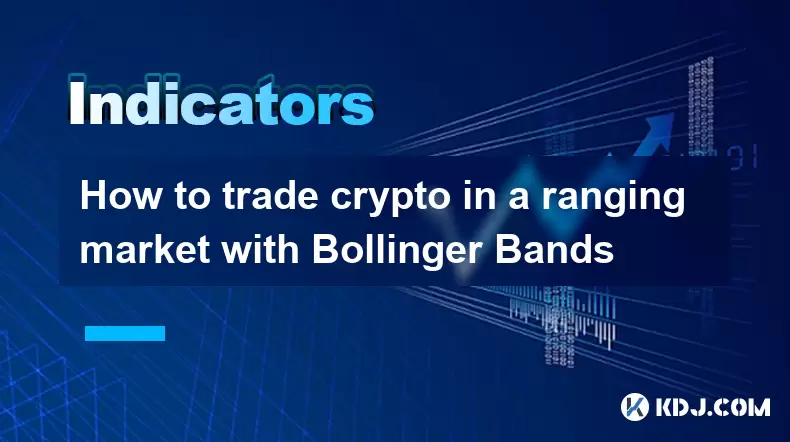-
 Bitcoin
Bitcoin $118400
0.39% -
 Ethereum
Ethereum $3814
2.17% -
 XRP
XRP $3.547
1.34% -
 Tether USDt
Tether USDt $1.000
0.00% -
 BNB
BNB $769.5
2.95% -
 Solana
Solana $191.7
6.36% -
 USDC
USDC $0.9999
0.01% -
 Dogecoin
Dogecoin $0.2722
7.75% -
 Cardano
Cardano $0.8995
5.59% -
 TRON
TRON $0.3158
-0.78% -
 Hyperliquid
Hyperliquid $47.37
4.46% -
 Stellar
Stellar $0.4848
3.54% -
 Sui
Sui $4.031
1.72% -
 Chainlink
Chainlink $20.11
3.94% -
 Hedera
Hedera $0.2832
3.16% -
 Avalanche
Avalanche $26.20
4.27% -
 Bitcoin Cash
Bitcoin Cash $530.5
0.67% -
 Shiba Inu
Shiba Inu $0.00001568
3.59% -
 Litecoin
Litecoin $118.4
1.42% -
 UNUS SED LEO
UNUS SED LEO $8.976
-0.23% -
 Toncoin
Toncoin $3.349
2.54% -
 Polkadot
Polkadot $4.590
2.54% -
 Uniswap
Uniswap $10.56
-0.59% -
 Ethena USDe
Ethena USDe $1.001
0.00% -
 Monero
Monero $327.7
0.39% -
 Pepe
Pepe $0.00001422
2.62% -
 Bitget Token
Bitget Token $4.973
-1.22% -
 Dai
Dai $1.000
0.02% -
 Aave
Aave $331.9
1.59% -
 Bittensor
Bittensor $429.6
-0.56%
How to trade crypto in a ranging market with Bollinger Bands
In ranging crypto markets, Bollinger Bands help identify buy/sell opportunities near support/resistance, with price often bouncing between bands.
Jul 11, 2025 at 01:14 pm

Understanding Ranging Markets in Cryptocurrency
In the world of cryptocurrency trading, a ranging market refers to a period when the price of an asset moves within a relatively stable upper and lower boundary. Unlike trending markets where prices move consistently upward or downward, ranging markets are characterized by sideways movement. This type of market condition is common during periods of indecision among traders, where neither buyers nor sellers have clear dominance.
During such phases, traders often struggle to find profitable opportunities because traditional trend-following strategies may not work effectively. However, technical indicators like Bollinger Bands can offer valuable insights into potential entry and exit points in these scenarios. Understanding how to identify and interpret ranging conditions is crucial before applying any strategy involving Bollinger Bands.
What Are Bollinger Bands?
Bollinger Bands are a popular technical analysis tool developed by John Bollinger in the 1980s. They consist of three lines plotted on a price chart:
- Middle Band: A simple moving average (usually 20 periods)
- Upper Band: Two standard deviations above the middle band
- Lower Band: Two standard deviations below the middle band
These bands dynamically adjust based on market volatility. When the market is volatile, the bands widen; when it's calm, they contract. In a ranging market, Bollinger Bands tend to stay relatively parallel and consistent, offering visual cues about potential price reversals at support and resistance levels.
Setting Up Bollinger Bands for Crypto Trading
Before diving into actual trading strategies, it’s essential to configure your Bollinger Bands correctly for cryptocurrency charts:
- Timeframe Selection: Choose a timeframe that aligns with your trading style. Day traders might prefer the 15-minute or 1-hour charts, while swing traders could use 4-hour or daily charts.
- Default Settings: Most platforms default to a 20-period SMA and two standard deviations. These settings are generally effective for crypto markets but can be adjusted based on asset volatility.
- Overlay on Price Chart: Ensure the bands are overlaid correctly on the candlestick chart so you can visually assess price interactions with the bands.
Once set up, observe how the price behaves around the upper and lower bands. In a range-bound environment, prices often bounce between these boundaries, creating predictable patterns.
Trading Strategy: Buying Low and Selling High Using Bollinger Bands
In a ranging market, one of the most effective strategies using Bollinger Bands is to buy near the lower band and sell near the upper band. Here’s how to execute this systematically:
- Identify the Range: Confirm that the market is indeed range-bound by observing horizontal support and resistance levels over multiple candles.
- Watch for Price Touches: Wait until the price touches or slightly penetrates the lower Bollinger Band. This often signals oversold conditions.
- Look for Reversal Candles: Confirm the reversal with bullish candlestick patterns like hammers, engulfing bars, or morning stars near the lower band.
- Place Buy Order: Enter a long position just above the closing of the reversal candle.
- Set Stop Loss: Place a stop loss below the recent swing low or below the lower Bollinger Band to manage risk.
- Take Profit Near Upper Band: Monitor the price as it moves toward the upper band. Consider taking partial profits as the price approaches or reaches the upper band.
- Sell Signal: If the price touches or slightly breaks the upper band with bearish reversal candlesticks, consider initiating a short position or closing long exposure.
This approach allows traders to capitalize on repeated price swings within the range without needing directional bias.
Filtering False Breakouts with Bollinger Bands
One challenge in ranging markets is the occurrence of false breakouts—where the price briefly pierces through a band or key level only to reverse shortly after. To avoid being caught off guard:
- Wait for Confirmation: Don’t act immediately upon a band touch. Wait for the next candle to confirm the reversal.
- Use Volume Indicators: Combine Bollinger Bands with volume tools like OBV (On-Balance Volume) or standard volume bars. A surge in volume during a bounce can validate the strength of the reversal.
- Check Other Timeframes: Analyze higher timeframes (e.g., 4H or Daily) to ensure there isn't a larger trend forming that could invalidate the current range.
- Avoid Overleveraging: Since ranging trades can sometimes lead to choppy movements, use tight stop losses and conservative position sizing to protect capital.
By incorporating these filters, traders can improve the reliability of their Bollinger Band-based entries and exits.
Combining Bollinger Bands with Other Indicators
While Bollinger Bands are powerful on their own, combining them with other indicators can enhance trade accuracy:
- Relative Strength Index (RSI): Use RSI to confirm overbought or oversold conditions when the price hits the upper or lower bands. An RSI reading above 70 suggests overbought territory, while below 30 indicates oversold.
- MACD (Moving Average Convergence Divergence): Look for MACD line crossovers or histogram changes to validate momentum shifts as price approaches the bands.
- Support/Resistance Zones: Overlay key psychological or historical support/resistance levels to see if they align with Bollinger Band reactions, increasing confluence for high-probability setups.
Using these combinations helps reduce false signals and increase confidence in each trade decision.
Frequently Asked Questions
Q1: Can Bollinger Bands be used in trending markets?
Yes, but with caution. In trending environments, prices may hug the upper or lower band for extended periods, which can mislead traders expecting a reversal. Adjustments like using dynamic trendlines or longer-term moving averages may be necessary.
Q2: How often should I adjust the Bollinger Band settings for crypto assets?
Stick to the default 20-period setting unless a specific asset exhibits unusual volatility. Frequent adjustments can lead to overfitting. Observe performance across multiple cycles before changing parameters.
Q3: What cryptocurrencies are best suited for Bollinger Band range trading?
Major pairs like BTC/USDT, ETH/USDT, and SOL/USDT are ideal due to their liquidity and tendency to form recognizable patterns. Altcoins with erratic behavior may not respond well to this strategy.
Q4: Should I always wait for a candle to close before entering a trade?
It's strongly recommended. Waiting for a confirmed candle close reduces the chance of reacting to fakeouts or wicks that don’t represent true price action.
Disclaimer:info@kdj.com
The information provided is not trading advice. kdj.com does not assume any responsibility for any investments made based on the information provided in this article. Cryptocurrencies are highly volatile and it is highly recommended that you invest with caution after thorough research!
If you believe that the content used on this website infringes your copyright, please contact us immediately (info@kdj.com) and we will delete it promptly.
- Shiba Inu Dreams vs. Bitcoin Solaris Reality: Decoding the Price Explosion Potential
- 2025-07-22 03:50:13
- Riding the Altseason Wave: Crypto Presales and Wallet Raises to Watch
- 2025-07-22 03:50:13
- Dogecoin Price Prediction: Can DOGE Rally to $1 After Recent Surge?
- 2025-07-22 03:55:12
- Crypto Stocks, Stablecoin Law & Trump: A New Era?
- 2025-07-22 02:30:12
- Kaito, Web3, and Crowdfunding: A New Era of Capital Alignment?
- 2025-07-22 02:30:12
- Saylor, Trump, and Bitcoin: A New York Minute on Crypto's Power Trio
- 2025-07-22 00:50:12
Related knowledge

Advanced RSI strategies for crypto
Jul 13,2025 at 11:01am
Understanding the Basics of RSI in Cryptocurrency TradingThe Relative Strength Index (RSI) is a momentum oscillator used to measure the speed and chan...

Crypto RSI for day trading
Jul 12,2025 at 11:14am
Understanding RSI in the Context of Cryptocurrency TradingThe Relative Strength Index (RSI) is a momentum oscillator used to measure the speed and cha...

Crypto RSI for scalping
Jul 12,2025 at 11:00pm
Understanding RSI in the Context of Crypto TradingThe Relative Strength Index (RSI) is a momentum oscillator widely used by traders to measure the spe...

What does an RSI of 30 mean in crypto
Jul 15,2025 at 07:07pm
Understanding RSI in Cryptocurrency TradingRelative Strength Index (RSI) is a momentum oscillator widely used in cryptocurrency trading to measure the...

What does an RSI of 70 mean in crypto
Jul 13,2025 at 06:07pm
Understanding the RSI Indicator in Cryptocurrency TradingThe Relative Strength Index (RSI) is a widely used technical analysis tool that helps traders...

Does RSI work in a bear market for crypto
Jul 16,2025 at 01:36pm
Understanding RSI in Cryptocurrency TradingThe Relative Strength Index (RSI) is a momentum oscillator used by traders to measure the speed and change ...

Advanced RSI strategies for crypto
Jul 13,2025 at 11:01am
Understanding the Basics of RSI in Cryptocurrency TradingThe Relative Strength Index (RSI) is a momentum oscillator used to measure the speed and chan...

Crypto RSI for day trading
Jul 12,2025 at 11:14am
Understanding RSI in the Context of Cryptocurrency TradingThe Relative Strength Index (RSI) is a momentum oscillator used to measure the speed and cha...

Crypto RSI for scalping
Jul 12,2025 at 11:00pm
Understanding RSI in the Context of Crypto TradingThe Relative Strength Index (RSI) is a momentum oscillator widely used by traders to measure the spe...

What does an RSI of 30 mean in crypto
Jul 15,2025 at 07:07pm
Understanding RSI in Cryptocurrency TradingRelative Strength Index (RSI) is a momentum oscillator widely used in cryptocurrency trading to measure the...

What does an RSI of 70 mean in crypto
Jul 13,2025 at 06:07pm
Understanding the RSI Indicator in Cryptocurrency TradingThe Relative Strength Index (RSI) is a widely used technical analysis tool that helps traders...

Does RSI work in a bear market for crypto
Jul 16,2025 at 01:36pm
Understanding RSI in Cryptocurrency TradingThe Relative Strength Index (RSI) is a momentum oscillator used by traders to measure the speed and change ...
See all articles

























































































